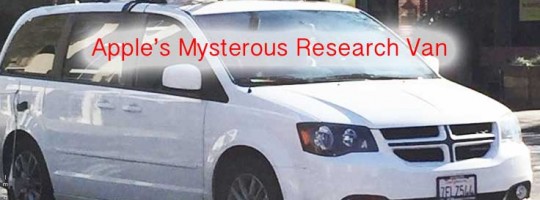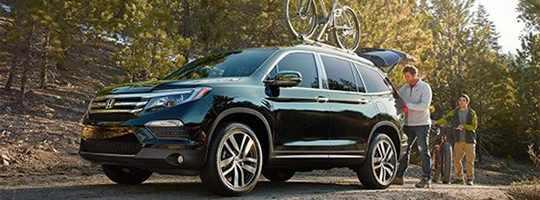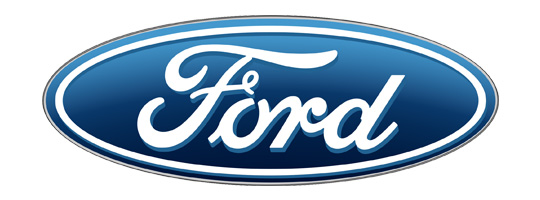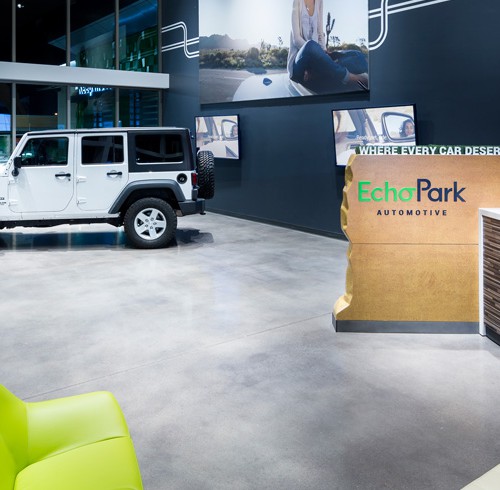The Current State Of Semi-Autonomous And Connected Cars

We are living on the cusp of a revolutionary change to our fundamental concepts of transportation in America and throughout the world.
An increasing number of automakers and technology companies are promising commercially-available fully self-driving vehicles within the next five years, with some predicting their arrival in our showrooms as soon as 2017. While there are a multitude of complex issues that need to be resolved before fully autonomous cars can exist on our roads, such as insurance, cybersecurity, government regulations, and societal acceptance, many major automakers are already selling vehicles with advanced semi-autonomous features and robust connectivity far beyond anything that has been available to consumers in the past.
One of the biggest changes in the auto industry in recent times is the increasingly blurred line between automakers and technology companies. High-tech cars are on the minds of all, and the race to be the first to bring new functionality to commercial vehicles exists throughout both industries.
When it comes to infotainment systems, Apple’s CarPlay and Google’s Android Auto are the top competitors, each battling for its place in cars manufactured by automakers worldwide. According to predictions by analytics firm IHS, by 2020, approximately 40 million cars will be using Android Auto and 37.1 million will be using CarPlay. Both systems enable drivers to run a selection of their smartphone apps on the car’s infotainment center, and although they have very different interfaces, they provide similar capabilities.
While many automakers are offering vehicles with either CarPlay or Android Auto as built-in systems, some companies are choosing instead to go out on their own. For example, Volvo is debuting its Sensus Connect infotainment system in the new XC90, featuring a substantially different interface and conceptual design than either of the aforementioned options. As opposed to a screen that is dominated by the app that is currently active, as on an iPhone or iPad, Volvo has taken an alternative approach with its vertically-oriented screen divided into four main tabs, offering the ability to swipe left and right from the main screen to create additional real estate. The possibility that Volvo or other companies will develop infotainment systems that become significant competitors to those from Apple and Google is certainly real, but the branding power of these tech giants may prove to keep all others far behind in this realm.
Connected cars account for a growing percentage of the vehicles on our roads, and although they remain in the minority overall, this is likely to change in the near future as consumers become increasingly interested in utilizing this technology in their cars. According to a report by Nielsen earlier this year, 90 percent of connected vehicle owners indicated that they are glad to have the technology in their cars. For its survey-based study, Nielsen queried 4,094 car owners about their experience with vehicle-to-driver communication and voice activated controls, Internet-enabled navigation, personal assistance services (such as GM’s OnStar system), vehicle Internet connectivity and vehicle mobile apps. Overall, the respondents indicated that the leading driver for satisfaction is functional personalization of the technology. The study further illustrated approximately 30 percent of respondents currently own vehicles with at least one connected feature, with many participants expressing a particular interest in the fun aspects of infotainment systems.
Other interesting results of Nielsen’s survey include the fact that 16 percent of respondents who indicated they have some form of connected car functionality said that they a voice-activated feature, and over half of them use it, with an 87 percent satisfaction rate. Internet-enabled navigation is less widespread, with only 11 percent of the survey respondents saying that they currently have this feature in their car. Eight percent of those who were polled indicated that they use a personal assistant service, while 7 percent have vehicle Internet connectivity, which is a relatively new feature that may grow in popularity in the coming period. Lastly, 7 percent of respondents said that they have vehicle mobile apps.
The levels of satisfaction for all of these connected car features was found to be very high, coming in between 87 percent and 91 percent of the survey participants. A small percentage of respondents found connected-vehicle functionality to be negative, indicating that the features are distracting, complicated and stressful, but this was by far the minority.
Overall, Nielsen’s survey clearly shows drivers who have connected cars are very pleased with the technology. Although it is still the minority of car owners who own a connected-vehicle, this number is almost certain to grow massively over the coming period as carmakers roll out increasingly sophisticated technology and drivers in general become more aware of the various ways these features can improve their driving experience.
What are the most advanced semi-autonomous systems currently available in new cars?
A growing body of research suggests computers are safer drivers than their human counterparts. Although there is still a great deal that needs to be done in order to shift the perceptions of those who believe semi-autonomous and autonomous cars aren’t safe, car owners who don’t have a partially autonomous vehicle may soon be in the minority. In fact, according to a recent U.S. survey by Boston Consulting Group, 55 percent of drivers indicated they would likely purchase a semi-autonomous car in the next five years. This finding clearly illustrates the growing acceptance of computer-controlled driving, and the increasing prevalence of these features may pave the way for the general public to embrace fully self-driving vehicles in the not-so-distant future.
The array of semi-autonomous features that are now offered in new cars is staggering, with automakers rapidly adding radar and camera-based systems that can keep a car in its lane, detect pedestrians and brake automatically to avoid a collision. At this point, they work with a driver behind the wheel, but eventually, versions of these systems will most likely control self-driving cars. Although this type of functionality used to be limited to luxury vehicles, it’s rapidly migrating to mainstream brands as the technology gets cheaper. Toyota, for example, says it will offer automatic braking, pedestrian detection and lane departure warning for just a few hundred dollars on all of its vehicles by 2017. Additionally, automakers are being urged to add these features by safety advocates, such as the Insurance Institute for Highway Safety, which gives its top rankings to vehicles that contain crash prevention technology.
Who are the major players and innovators in this space?
Most high-end cars from brands like Mercedes, BMW and Lexus are equipped with radars, cameras and other sensors that allow for safety and convenience features like adaptive cruise control, automatic parking, lane keeping and automatic braking. Although they are still far from being full-fledged self-driving vehicles, they are certainly semi-autonomous, or as the NHTSA puts it, “Level 2” autonomous cars (with Level 4 being a fully self-driving vehicle).
Two of the first manufacturers to offer a Level 2 car are Mercedes-Benz and Infiniti. Recently, Tesla unveiled its latest semi-autonomous developments with the Autopilot system, which was provided to Model S and X owners via an over-the-air update. Similar Level 2 systems are expected to arrive in our showrooms from other manufacturers in the very near future, including Cadillac’s “Super Cruise” on the flagship 2017 Cadillac CT6, Audi’s “Traffic Jam Assist” on the Audi Q7 next year, and Volvo’s “IntelliSafe Auto Pilot,” which the company says will allow the driver to take their hands off the wheel and pay less attention to the road, thereby making it a Level 3 system. Volvo says that the program will start in 2017 in 100 customer cars, with plans to expand the feature to all of its vehicles by 2020. Toyota is working on a similar system called “Highway Teammate,” while Honda says it will offer semi-autonomous functionality in the near future.
And what about the tech companies? Google is definitely making a massive push for its own self-driving tech, taking a different approach by looking to removing driver controls completely as opposed to integrating semi-autonomous technology that still requires driver involvement. Then, of course, there’s Apple. Although the company has never publicly revealed the existence of its oft-rumored “Project Titan” car development project, it seems increasingly likely the company is indeed working secretly on this initiative, with many recent hirings of automotive experts and engineers amid speculation of its involvement in the auto industry.
Some of the most common semi-autonomous features that are currently available are:
Adaptive Cruise Control
Of course, regular cruise control has been around for decades, but it simply allows a driver to keep the car at a set speed on the highway. Adaptive cruise control maintains a set speed as well as a set distance from the car in front of it, and it is capable of slowing down or speeding up automatically. While this functionality started to appear on luxury brands like Mercedes and Lexus approximately a decade ago, it is now available on less expensive models, including the Mazda3 small car and the Chrysler 200 sedan.
Lane Keeping
Lane departure warning systems beep or vibrate if the driver leaves a lane, while sophisticated camera-based lane keeping systems are able to steer the car back into the lane automatically. The technology is still limited in some ways, as it may not work in snow or during other times when the lane markings aren’t clearly visible, but these systems still provide increased safety in most situations. Lane keeping functionality first appeared on the market in 2014, with many automakers now offering it in their new vehicles, including Ford Fusion Titanium, Jeep Renegade Limited, and others.
Emergency Braking
Some of the currently-available collision warning systems either beep or flash lights to warn the driver if an object is detected. However, the more advanced options warn the driver and, if the driver doesn’t react, apply the brakes automatically, either bringing the car to a complete stop or slowing it down enough to avoid an accident. The technology was first introduced in 2008 and it’s recommended by the federal government to increase safety. Emergency braking is already standard on some cars, including the Volvo XC90 SUV, with many other vehicles offering the feature as an add-on, including the Subaru Outback and the Toyota Camry XLE.
Self-parking
Who likes to park? Nobody! Self-parking systems are a welcome addition to the lives of most drivers as they can find a spot and automatically park in a parallel or perpendicular manner. The systems have been on the market since 2008, and have since become standard on a growing number of mainstream vehicles.
Highway Autopilot
Single-lane highway autopilot is basically a combination of adaptive cruise control and lane keeping, thereby keeping the car centered in its lane at highway speeds and allowing the driver to cruise with minimal effort. Mercedes, Infiniti and Audi are among the automakers who offer systems that work in tandem on the highway. Tesla is one of the leaders in this space, with its recent over-the-air update that effectively makes tens of thousands of cars more advanced, even though they are already owned by consumers. Autosteer, the beta feature of Autopilot that is being pushed to the Model S and X, uses real-time feedback and a suite of sensors to read lane lines and detect other vehicles. By utilizing a front-facing radar, a camera with image recognition capability, and a 360-degree ultrasonic sonar, the car is able to steer itself and maintain a safe speed. However, even in Autopilot, the driver must keep their hands on the wheel for at least the majority of the time. Although you can remove your hands altogether, after a few seconds, the car will ask you to touch the wheel in some capacity. If the owner grabs the wheel fully at any point, Autopilot will turn off, thereby returning complete control of the car to the driver.
Fully autonomous cars still have a legal battle to face before they can become commercially available, and they’re currently only legal for road testing in a few states. But semi-autonomous driving features are already here with plenty more to arrive soon. Are consumers ready to give up partial control of their driving to a computer with the expectation that we’ll all eventually give up full control of our cars to a machine? A growing body of evidence suggests that computer-driven vehicles are much safer than their human-controlled counterparts, with semi-autonomous features also expected to greatly reduce the dangers of driving.
Selling and servicing cars could drastically change over the next five years for all dealerships as advanced technology continues to become mainstream. If all vehicles become fully autonomous in the future, traveling in a car could be transformed from being a significantly dangerous and stressful undertaking to being as safe and easy as flying in an airplane, but with better entertainment options plus your own choice of food and passengers.
Sounds pretty good, doesn’t it?












Warning: count(): Parameter must be an array or an object that implements Countable in /home/pg4b1yzvrqqo/domains/test.drivingsalesnews.com/html/wp-includes/class-wp-comment-query.php on line 399